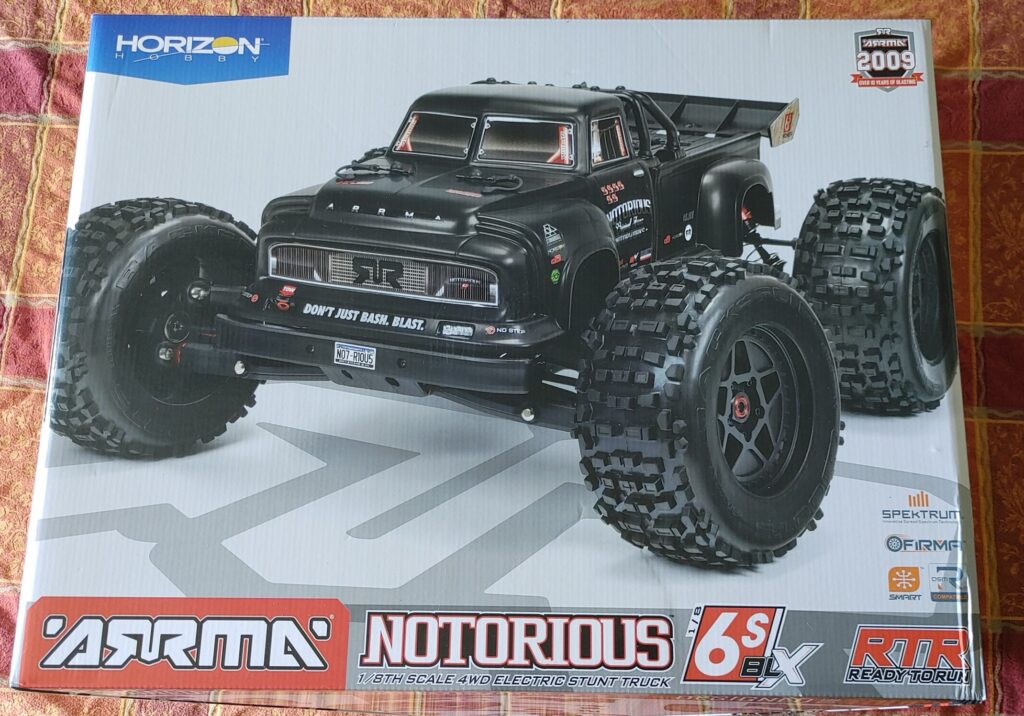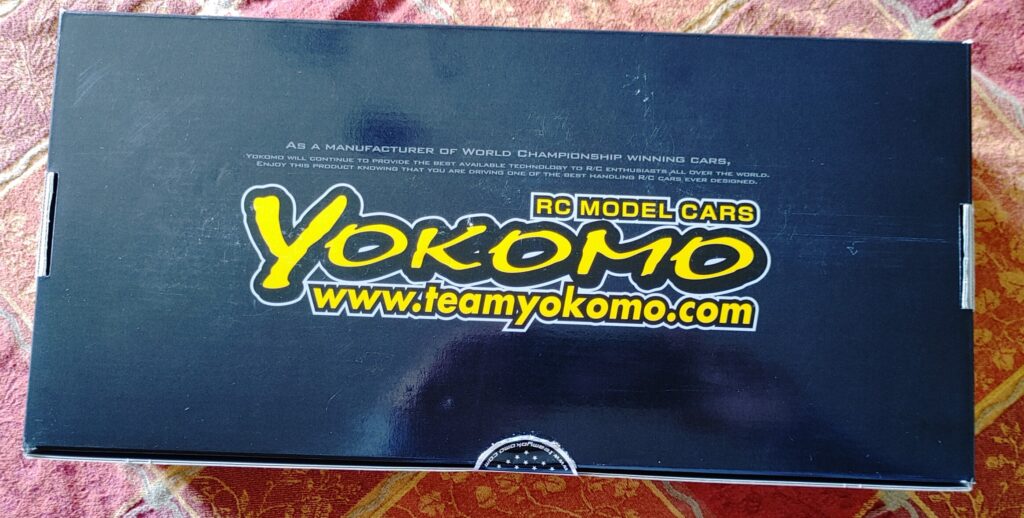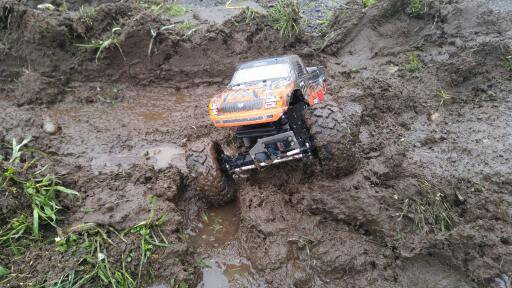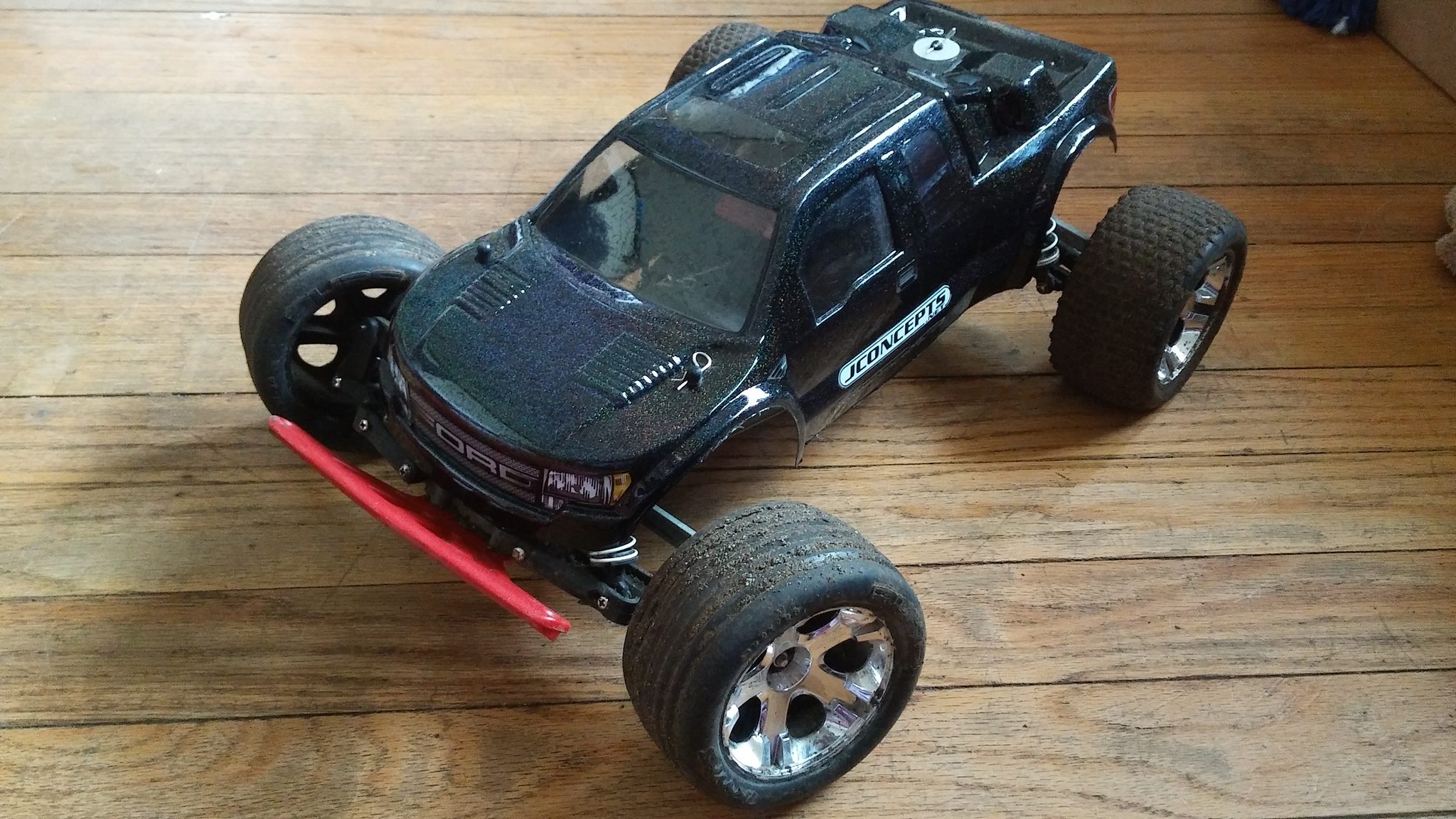RTR vs. Kit RC Cars: Which Path to High-Speed Fun is for You?
Choosing your first RC car? Discover how RTR and kit RC cars pave distinct paths to bashing glory.
Our website earns commissions from affiliate marketing programs for purchases made via our links, at no extra cost to you. This supports our content creation. We only endorse products we’ve used or believe will benefit our readers. Thanks!
Starting out in the radio-control car hobby, you’ll find there are two main paths you can take: RTR vs. kit RC cars.
Ready-to-run cars are super convenient. You can start playing right away, which is perfect if you’re excited to start RC racing. Kit cars, though, let you learn by building your car piece by piece, customizing it just how you like it.
So, what’s better for you? This guide is here to help you figure that out. We’ll cover everything you need to know about each option so you can easily choose your first RC car.
What are Ready-to-Run vs. Kit RC Cars?
The RC car hobby lets you step into an exciting world where speed meets skill. And the choice between ready-to-run and kit RC cars is your first step to getting on the track.
Ready-to-Run RC Cars
Ready-to-run (RTR) RC cars are just like they sound. They’re all set up and ready to go right out of the box, so you don’t have to assemble them or figure out what parts to buy.
Just open the package, charge the battery, and you’re off to the races. RTR vehicles are an excellent choice if you’re excited to start driving your RC car and don’t want to wait another minute.
RC Car Kits
On the other hand, RC kits are for those who like to get hands-on. These kits come with the basic parts you need, but you must buy electronics and build them yourself. Think of it like a model airplane or a LEGO set.
Building the kit can take some time and patience, but it’s super rewarding. You learn a lot about how your car works, which can be handy for making repairs or upgrades. Plus, you can make it truly yours by customizing it as you build.
What You Need to Know About RTR Cars
Learning about RTR cars can help you decide if they’re the right pick for your first RC car. It’s how to tell if you like the idea of a car that’s ready to go right out of the box. This helps you choose a model you’ll have fun with and keep enjoying as you get deeper into the hobby.

How to Get Started with RTRs
Some of the most popular RTR cars come from brands like Traxxas, ARRMA, and Losi.
Depending on the brand you choose, an RTR comes with everything you need to get started:
- a fully assembled car with wheels, a body, and all its electronics
- a small NiMH battery
- a basic wall charger
This makes it incredibly easy to get into the action.
In fact, once you’ve got your car in your hands, you’re within minutes of having a blast. Just follow these steps.
- Unbox your car: Carefully remove your car and its accessories from the packaging.
- Check the manual: Even with RTR cars, it’s good to glance through the manual for any specific setup instructions or charging guidelines.
- Charge the battery: If the battery isn’t already charged, make sure to charge it fully before your first run. Follow the instructions in the manual to avoid any mishaps.
- Install batteries in the transmitter: Your remote control will need batteries, usually four AAs, and they’re typically not included.
- Put the battery in your car: After charging your car’s battery, plug it in and secure it in place as instructed by the manual.
- Turn on the remote and car: First, turn on your remote using its button or switch. Then, power up your RC car by pressing a button or flipping a switch on the electronic speed control (ESC).
After these steps, you’re ready to start having fun with your RC car. You can race it on a track or just drive it around your yard.
Advantages and Disadvantages of RTR RC Cars
RTR RC cars have many pros and cons. Here’s what you need to know to decide if this car is right for you.
Pros
- Open the box, and you’re ready to race—No assembly required.
- RTR cars are easy to use, making them great for people new to RC cars.
- They come all set up by professionals for reliability and performance.
- Many models come with support and warranties from reputable brands.
- They’re easy to find online or in hobby shops, with plenty of upgrade parts and cool add-ons.
Cons
- It’s hard to spot your RC car in a crowd since it looks like many others.
- Skipping the build means you miss learning how all the parts work together.
- Fixing your car can be trickier if you’re unfamiliar with how it was put together.
- You might spend more upfront than you would on a similar kit car.
- Over time, you might wish for more ways to customize your car.
Popular RTR Cars for Beginners
When you’re just starting with RC cars, picking the right model is key. Here are some popular RTR cars you might enjoy:
- Traxxas Slash: Eager for off-road excitement? This durable 2WD short-course truck is tough and pretty quick right out of the box, perfect for when jumps call your name.
- ARRMA Granite: If you love tough 4×4 trucks that can go anywhere and do anything, this monster truck is the way to go. It’s built super strong to handle hours of rough play.
- Redcat Racing Everest-10: Interested in rock crawling and off-road adventures? This crawler offers excellent performance and reliability at an affordable price.
- CEN M-Sport: If you’re drawn to the excitement of rally racing, get this RC vehicle. It combines the thrill of off-road racing with the precision of driving on-road, offering the best of both worlds.
- Losi Mini-T 2.0: If you’re tight on space or just love the idea of a smaller scale, this mini truck packs a lot of fun into a compact package.
- Kyosho Fazer MK2: Dream of racing on smooth roads with a sleek car? This touring car is all about speed and style, allowing you to run fast and look good doing it. More than a dozen versions are available including a 1972 Nissan 240Z, 1967 Pontiac GTO, and 2006 Subaru Impreza in drift mode.
What You Need to Know About RC Car Kits
Like doing DIY projects and really want to understand RC cars? Think about making your first RC car from a kit. It takes more time and effort than RTR cars before you can start driving. But if you enjoy building, it’s definitely worth it.

How to Get Started with a Kit Car
When you choose an RC car kit, you’re signing up to build your car piece by piece. The first build might take a few days since you’re just learning the steps. Here’s how it’ll go.
Gather Parts and Tools
Before you assemble the car, you need to check what parts come with the kit and what you need to buy.
For example, Tamiya kits usually have a motor, ESC, unpainted body, wheels, and tires. However, these kits don’t include a servo, receiver, remote, batteries, battery charger, or paint for the body.
If you go for pro kits, like from Tekno RC or Yokomo, they come with even less—basically, just the chassis parts. This means you must buy everything else: the body, wheels, tires, and all the electronics.
Plus, if you don’t have tools, you’ll need those, too. Starting with a full set from brands like Integy or Traxxas is a good idea because they give you everything needed to build your kit.
Just need one or two specific tools? Pick up single tools from MIP tools or similar brands.
Know the Ideal Build Order
Once you have everything you need, it’s time to start building your new RC car. The order of assembly varies from kit to kit, but here’s a general idea of what to do:
- Assemble the chassis
- Install the motor, ESC, servo, and receiver
- Glue the tires to the rims
- Mount the wheels on your car
- Paint the Lexan body and add decals
- Install any extra accessories, like light kits
Painting the body can technically happen at any stage of the assembly process. However, it should be completed before adding optional accessories.
Use RC Car Kit Building Tips
Use these tips to build your RC car kit easily.
- Read the manual: Before you do anything, read the instructions to understand the process and what’s involved. Also, double-check that you have all the necessary parts and tools.
- Organize your workbench: Tidy up your work area and put your tools and parts within reach. Consider using trays to keep parts from different bags separated.
- Follow the steps closely: Take it step by step, following the instructions closely to avoid any mistakes. Review the steps to make sure everything fits right before moving on.
- Take your time: There’s no need to rush. Enjoy putting your car together and learning a bit more about how it all works as you go.
- Test-fit parts: Before applying glue or fully tightening screws, test-fit the parts to see if they align correctly. Once you’re sure, tighten the parts snugly, being careful not to overdo it and cause damage.
- Ask for help: Stuck on something? There’s a whole world of help in online forums and video tutorials. Check out YouTube channels like Scale Builder’s Guild, RCKicks, or Rob Brennan RC for some step-by-step guides.
Before you take your RC car out for its first spin, do a quick once over. Make sure all the parts are tightly secured, the electronics are set up right, and the car moves smoothly without any sticking.
Advantages and disadvantages of Building a Kit
If the idea of building your RC car doesn’t seem too intimidating, or if you’re just excited to give it a shot, RC car kits could be the way to go. But before diving in, here are some other things you might want to consider.
Pros
- When you build your car from a kit, it feels extra special because you made it yourself.
- Kits let you add your own flair to your car, allowing you to show off your style and personality.
- You get to hand-pick your electronics, giving you full control over your car’s performance.
- Building a kit teaches you a lot about how RC cars work, making them easier to diagnose and fix
- An RC car kit project can be a fun and rewarding activity to share with friends and family
Cons
- Building a kit isn’t something you do in an afternoon—It takes time and patience.
- Unlike RTR cars, you can’t hit the track immediately, delaying your fun day out.
- Sometimes, parts in the kit don’t fit together perfectly, which can be annoying.
- The instructions aren’t always super clear, leaving you guessing how to assemble certain parts.
- Some kit parts might not come with a warranty, so if something goes wrong, it’s on you to fit it.
Popular RC Car Kits for Beginners
- Tamiya TT-02: This versatile kit comes in many styles, including touring, rally, and drift specs. It’s super simple to assemble, too, with clear instructions and all the parts bagged separately.
- ECX 1/10 AMP MT BTD: The ECX 1/10 AMP MT Build-To-Drive kit makes building easy by including all the tools, electronics, and pre-assembled parts you need. Once assembled, this monster truck is ready for whatever off-road adventures you can think up.
- Axial SCX10 III: Want to get into scale trail driving? Get this 1/10 scale off-road crawler kit. It’s highly customizable, with many options for body styles, wheelbases, and electronics.
- RedCat RDS Builders Kit: If you want to join the RC drifting scene, RedCat’s got you covered. This unassembled kit allows you to customize every last thing, down to the body and wheels.
- Kyosho Tomahawk: This 1980s re-release is a blast from the past. Only electronics and paint are needed to complete it, so you’re only steps away from enjoying a classic RC experience with modern reliability.
- Team Associated RC10B7D: Interested in competitive racing? This buggy kit is your ticket to the thrill of the track. Remember to choose your electronics wisely to follow the rules of your chosen racing series.
It’s Time to Decide: RTR vs. Kit RC Car?
Now that you’ve learned about RTR and kit RC cars, it’s time to make your choice. If you prefer ready-to-run convenience, go for an RTR. But a kit might be more your speed if you enjoy building and customizing. It all comes down to personal preference. Whatever you pick, get ready for endless RC fun ahead.

FAQs
What does RTR mean for RC cars?
RTR stands for “ready-to-run” RC cars. These cars are already put together and ready to play with straight out of the box. You just need to charge the battery, grab the remote, and start driving.
What are ARTR radio-control cars?
ARTR stands for “almost ready-to-run” RC cars. These are like the middle ground between fully built RTR cars and kits you have to assemble yourself. Sometimes, they’re referred to as build-to-drive kits. Examples of ARTR cars include the ECX 1/10 AMP MT Build-To-Drive, Xpress Execute XQ2S, and LC Racing 1/10 4WD Rally Chassis ARTR Touring Car Kit.
What electronics do RC cars need?
RC cars need several electronic parts to work:
- Motor: An electric motor powers your RC car. Brushed motors come in beginner models due to their simplicity and lower cost. Brushless motors offer more power, efficiency, and longer lifespans.
- Electronic speed control: The ESC controls the motor’s speed and direction. It also has a built-in battery eliminator circuit (BEC) that powers the receiver and servo. Speed controls are either brushed or brushless, matching their motor types.
- Servo: The servo helps steer the car. When you turn the knob on the remote, the servo moves the wheels left or right. It can also control accessories, like lights and winches.
- Receiver: The receiver picks up signals from the transmitter and converts them into actions by the car’s motor, servo, and other parts.
- Radio transmitter: Also known as the remote, this device sends commands to the car, allowing you to steer, accelerate, and brake. The transmitter also controls other functions, like Active Vehicle Control on certain ARRMA vehicles like the Vorteks 4×4 3S BLX.
- Battery: Batteries supply power to all of your car’s electronics. You’ll find them in types like NiMH (Nickel-metal hydride) and LiPo (Lithium polymer). The size of the battery can affect how fast your car goes and how long it can run before needing a recharge.
- Battery charger: You’ll need this to charge your car’s battery. Make sure it matches your battery type, like NiMH or LiPo.
RTR RC cars have all these electronics hooked up and ready to go. Kits may have some or none of these electronics, and you must install them.
Can I upgrade RTR and kit RC cars?
You can upgrade both RTR and kit RC cars to improve their speed, handling, and looks. Common upgrades include the motor and ESC, servos, tires and wheels, and Lexan body shells. You can find the necessary for these upgrades at hobby stores or online.

